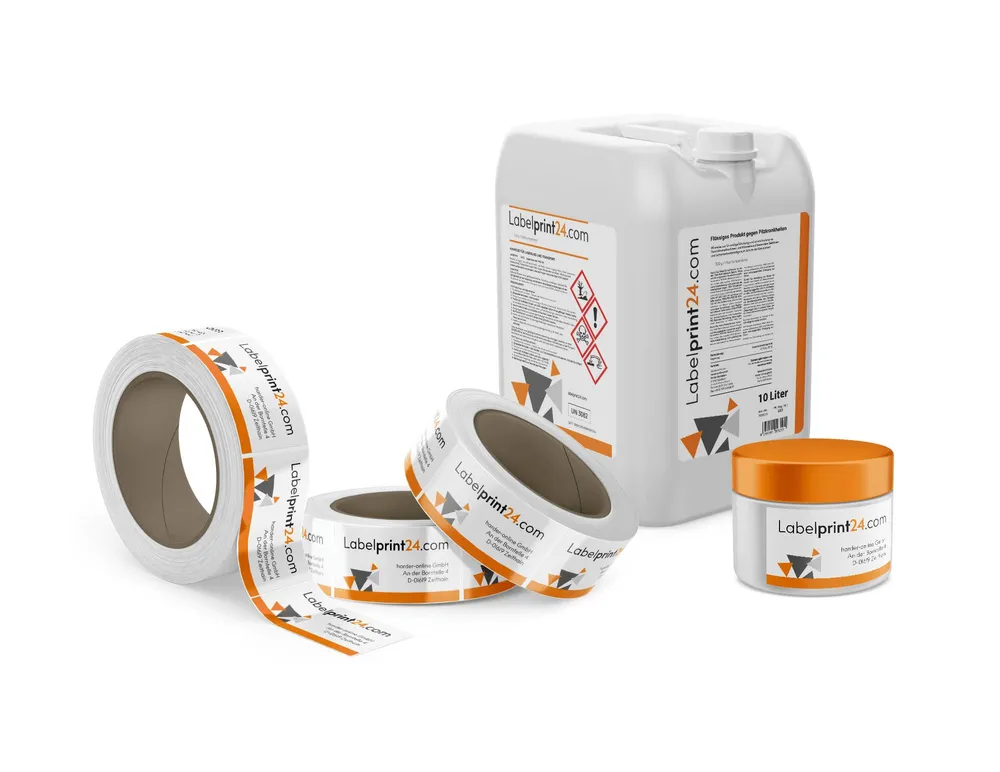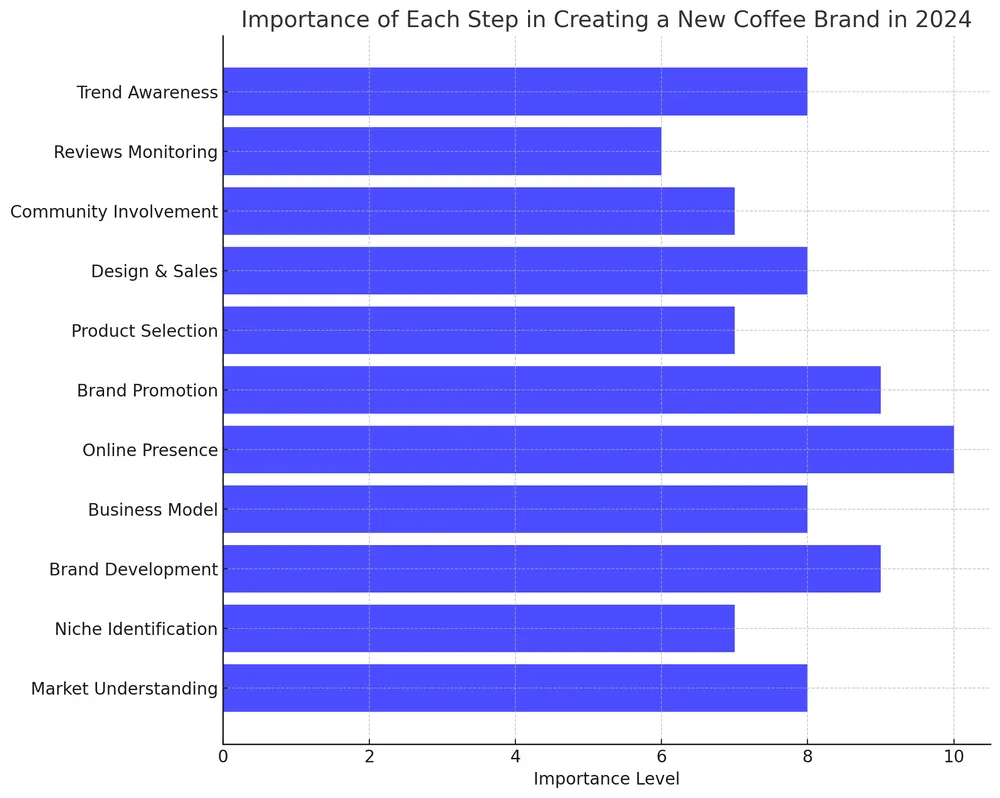
Brewing Success: Your Comprehensive Guide to Launching a New Coffee Brand in 2024
Key Takeaways:
- Market Research: Conduct thorough market research to understand your target audience, competition, and industry trends.
- Brand Identity: Develop a unique and memorable brand identity that reflects your values and appeals to your target market.
- Packaging Design: Invest in innovative and attractive packaging solutions that stand out on the shelves and convey your brand message effectively.
- Labelling Strategy: Create informative and visually appealing labels that communicate your brand story and comply with regulations.
- Go-to-Market Plan: Develop a comprehensive go-to-market strategy that includes both traditional and digital marketing channels to reach your target audience effectively.
Introduction

The coffee market continues to thrive, presenting ample opportunities for new brands with a unique proposition. At Labelprint24, we understand the critical role that branding and packaging play in making your coffee brand stand out in a crowded marketplace. In this guide, we'll provide you with the insights and strategies needed to brew success for your coffee brand launch.
Understanding Your Market
Before embarking on your coffee brand journey, it's essential to have a deep understanding of your target market. Conduct thorough market research to identify your ideal customer profile, including their age, income, lifestyle, and coffee preferences. This information will help you tailor your product offerings, pricing strategy, and marketing messages to effectively reach and resonate with your target audience.
Consider the following factors when conducting your market research:
- Demographics: Age, gender, income, education, and occupation of your target customers.
- Psychographics: Lifestyle, values, attitudes, and interests of your target audience.
- Buying Behaviour: Frequency of coffee purchases, preferred coffee types, and loyalty to existing brands.
- Market Trends: Emerging trends in the coffee industry, such as sustainability, single-origin beans, and cold brew.
| Factors | Questions to Consider |
| Demographics | What is the age range, gender, income level, and education of your target customers? |
| Psychographics | What are the lifestyle, values, attitudes, and interests of your target audience? |
| Buying Behaviour | How often do they purchase coffee, what types do they prefer, and are they loyal to existing brands? |
| Market Trends | What are the emerging trends in the coffee industry, such as sustainability, single-origin beans, and cold brew? |
Additionally, analyse your competition to identify gaps in the market and opportunities for differentiation. Our research shows a growing demand for organic, fair-trade, and sustainably sourced coffees, which could be a niche worth exploring for your brand.
Designing Your Brand Identity
Creating a memorable and cohesive brand identity is crucial for establishing a strong presence in the coffee market. Your brand identity should reflect your unique values, personality, and the experience you aim to provide to your customers.
Start by developing a compelling brand name, logo, and slogan that capture the essence of your coffee brand. Consider the current trends in the coffee industry, such as sustainability, community engagement, and artisanal craftsmanship, and incorporate these elements into your brand narrative.


When designing your brand identity, keep the following elements in mind:
- Brand Name: Choose a memorable, easy-to-pronounce name that reflects your brand's personality and values.
- Logo: Create a visually appealing and versatile logo that can be used across various mediums, from packaging to digital platforms.
- Colour Palette: Select a colour scheme that aligns with your brand's personality and evokes the desired emotions in your target audience.
- Typography: Choose fonts that are legible, consistent, and reflective of your brand's style and tone.
- Brand Voice: Develop a consistent brand voice that resonates with your target audience and is used across all communication channels.
Your brand identity should be consistently applied across all touchpoints, including your packaging, website, social media, and marketing materials. This consistency helps build brand recognition and loyalty among your target audience.
Packaging Solutions That Elevate Your Brand
Your packaging is often the first interaction customers have with your coffee brand, making it a crucial element in attracting attention and driving sales. Invest in high-quality, innovative packaging solutions that not only protect your coffee but also serve as a powerful marketing tool.
Consider the following packaging options for your coffee brand:
- Pillow Boxes: These boxes offer an excellent canvas for showcasing your brand's creativity and premium positioning. Perfect for presenting coffee samples or gift sets.
- Flat Bottom Bags: Ideal for larger quantities of coffee, flat bottom bags provide a stable base and ample space for branding and product information.
- Tin Cans: Tin cans offer a classic and durable option for coffee packaging, with a premium feel that appeals to traditional coffee lovers.
- Resealable Pouches: These pouches provide convenience and freshness for customers, allowing them to easily store and reseal the coffee between uses.
When selecting packaging materials, prioritise sustainability and eco-friendliness to align with the growing consumer demand for environmentally conscious brands. Opt for recyclable, biodegradable, or compostable materials whenever possible, and communicate these choices prominently on your packaging.
Labelling Your Coffee Products
Effective labelling is essential for communicating your brand story, product information, and regulatory requirements to your customers. Your labels should be visually appealing, informative, and aligned with your overall brand identity.
Consider the following label types for your coffee products:

1. Foil Labels: Add a touch of elegance and premium feel to your packaging with foil labels. These labels catch the eye and convey a sense of quality and sophistication.
2. Warning Labels: Include product labels with warning triangles to ensure compliance with safety regulations and inform customers about potential allergens or specific handling instructions.


When designing your labels, consider the following best practices:
- Readability: Ensure that your labels are easy to read, with clear fonts and sufficient contrast between the text and background.
- Product Information: Include essential product details, such as coffee type, roast level, origin, and brewing instructions.
- Brand Story: Use your labels to share your brand's unique story, values, and commitment to quality and sustainability.
- Regulatory Compliance: Adhere to local and international labelling regulations, including allergen warnings, nutritional information, and country of origin.
Developing Your Go-to-Market Strategy
Launching your coffee brand successfully requires a well-planned go-to-market strategy that leverages both traditional and digital marketing channels. Start by identifying the most effective channels to reach your target audience, such as social media, email marketing, influencer partnerships, and targeted advertising.
Consider the following marketing channels and tactics for your coffee brand launch:
- Social Media Marketing:
- Create engaging content that showcases your brand's unique story, values, and products.
- Leverage visually-driven platforms like Instagram and Pinterest to share eye-catching images and videos of your coffee products and brewing process.
- Engage with your audience by responding to comments, messages, and reviews promptly and authentically.
- Create engaging content that showcases your brand's unique story, values, and products.
- Email Marketing:
- Build an email list of subscribers interested in your coffee brand and products.
- Send regular newsletters featuring new product launches, special promotions, and educational content about coffee culture and brewing techniques.
- Personalise your email campaigns based on subscriber preferences and behaviour to improve engagement and conversion rates.
- Build an email list of subscribers interested in your coffee brand and products.
- Influencer Partnerships:
- Identify influencers in the coffee and lifestyle niches who align with your brand's values and target audience.
- Collaborate with influencers to create sponsored content, product reviews, and giveaways that expose your brand to a wider audience.
- Leverage influencer-generated content across your own marketing channels to build trust and credibility with potential customers.
- Identify influencers in the coffee and lifestyle niches who align with your brand's values and target audience.
- Targeted Advertising:
- Use platforms like Google Ads, Facebook Ads, and Instagram Ads to reach your target audience with highly targeted campaigns.
- Create compelling ad copy and visuals that highlight your brand's unique selling points and encourage clicks and conversions.
- Continuously monitor and optimise your ad campaigns based on performance metrics and audience insights.
- Use platforms like Google Ads, Facebook Ads, and Instagram Ads to reach your target audience with highly targeted campaigns.
In addition to digital marketing efforts, consider the following traditional marketing tactics:
- Local Partnerships: Partner with local cafes, restaurants, and retailers to offer your coffee products and increase brand visibility.
- Event Marketing: Attend industry events, trade shows, and farmers' markets to network with potential partners and customers, and gather valuable feedback on your products.
- Sampling and Promotions: Offer free samples of your coffee products at high-traffic locations or through targeted direct mail campaigns to encourage trial and purchase.

Embracing Sustainability in Your Coffee Brand
In today's environmentally conscious market, integrating sustainability into your coffee brand is no longer an option—it's a necessity. Consumers are increasingly aware of the environmental impact of their purchases and are actively seeking brands that prioritise sustainability.
Consider the following strategies for embracing sustainability in your coffee brand:
- Sustainable Sourcing:
- Source your coffee beans from fair-trade and organic farms that prioritise environmental conservation and ethical labour practices.
- Source your coffee beans from fair-trade and organic farms that prioritise environmental conservation and ethical labour practices.
- Eco-Friendly Packaging:
- Choose packaging materials that are recyclable, biodegradable, or compostable to reduce your brand's environmental footprint.
- Opt for minimal packaging designs that use less material and are easier to recycle or dispose of responsibly.
- Encourage customers to reuse or recycle your packaging through clear labelling and incentive programmes.
- Choose packaging materials that are recyclable, biodegradable, or compostable to reduce your brand's environmental footprint.
- Sustainable Operations:
- Implement sustainable practices throughout your supply chain, such as reducing waste, optimising transportation, and using renewable energy sources.
- Set measurable sustainability goals and regularly report on your progress to stakeholders and customers.
- Partner with organisations that promote sustainability in the coffee industry to enhance your brand's credibility and impact.
- Implement sustainable practices throughout your supply chain, such as reducing waste, optimising transportation, and using renewable energy sources.
- Education and Advocacy:
- Use your brand platform to educate customers about the importance of sustainability in the coffee industry and the role they can play as conscious consumers.
- Advocate for sustainable practices and policies within the coffee industry through collaborations, sponsorships, and thought leadership.
- Encourage customers to adopt sustainable habits, such as using reusable cups and properly disposing of coffee waste.
- Use your brand platform to educate customers about the importance of sustainability in the coffee industry and the role they can play as conscious consumers.
By prioritising sustainability in your coffee brand, you can not only reduce your environmental impact but also attract and retain customers who value responsible and ethical business practices.
Building Strong Customer Relationships
Building strong relationships with your customers is essential for fostering brand loyalty and driving long-term success. Engage with your customers regularly through various channels to gather feedback, address concerns, and provide exceptional customer service.
Consider the following strategies for building strong customer relationships:
- Personalised Communication:
- Use customer data and preferences to personalise your communication across email, social media, and other channels.
- Address customers by name, recommend products based on their past purchases, and send targeted promotions and discounts.
- Celebrate customer milestones, such as birthdays and anniversaries, with special offers and personalised messages.
- Use customer data and preferences to personalise your communication across email, social media, and other channels.
- Loyalty Programmes:
- Implement a loyalty programme that rewards customers for their repeat purchases and referrals.
- Offer exclusive promotions, discounts, and early access to new products to make your loyal customers feel valued and appreciated.
- Gamify your loyalty programme with challenges, badges, and tiers to encourage ongoing engagement and purchases.
- Implement a loyalty programme that rewards customers for their repeat purchases and referrals.
- Customer Feedback:
- Regularly seek customer feedback through surveys, reviews, and focus groups to continuously improve your products and services based on their preferences and needs.
- Respond promptly and empathetically to customer enquiries, complaints, and suggestions across all communication channels.
- Use customer feedback to inform product development, packaging design, and marketing strategies.
- Regularly seek customer feedback through surveys, reviews, and focus groups to continuously improve your products and services based on their preferences and needs.
- Community Building:
- Foster a sense of community among your customers by creating online forums, social media groups, and events where they can connect and share their love for your brand.
- Encourage user-generated content, such as photos and videos featuring your coffee products, and showcase them across your marketing channels.
- Support local communities and causes that align with your brand values to demonstrate your commitment to social responsibility and build goodwill among customers.
- Foster a sense of community among your customers by creating online forums, social media groups, and events where they can connect and share their love for your brand.
By prioritising strong customer relationships, you can turn one-time buyers into loyal brand advocates who will support your coffee brand for years to come.
Conclusion
Launching a successful coffee brand in 2024 requires a strategic and holistic approach that encompasses market research, brand identity development, packaging and labelling solutions, go-to-market planning, sustainability, and customer relationship building.
By understanding your target audience, crafting a memorable brand identity, investing in innovative packaging and labelling, leveraging effective marketing channels, embracing sustainability, and fostering strong customer relationships, you can position your coffee brand for success in the competitive marketplace.
Remember, at Label Print 24, we are your trusted partner in providing high-quality packaging and labelling solutions that elevate your brand and help you stand out on the shelves. With our expertise and range of products, we are ready to support you at every stage of your coffee brand journey.
Let's brew success together and make your coffee brand the talk of the town in 2024!




